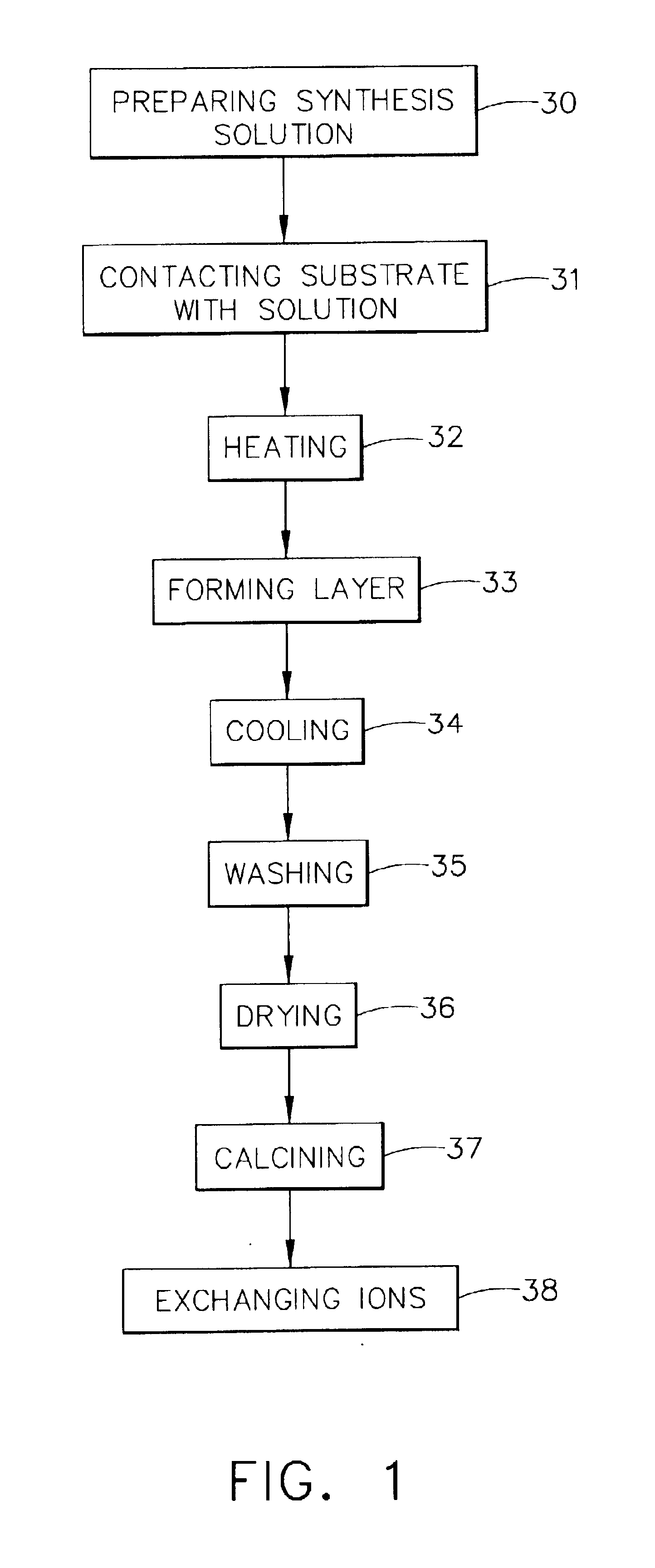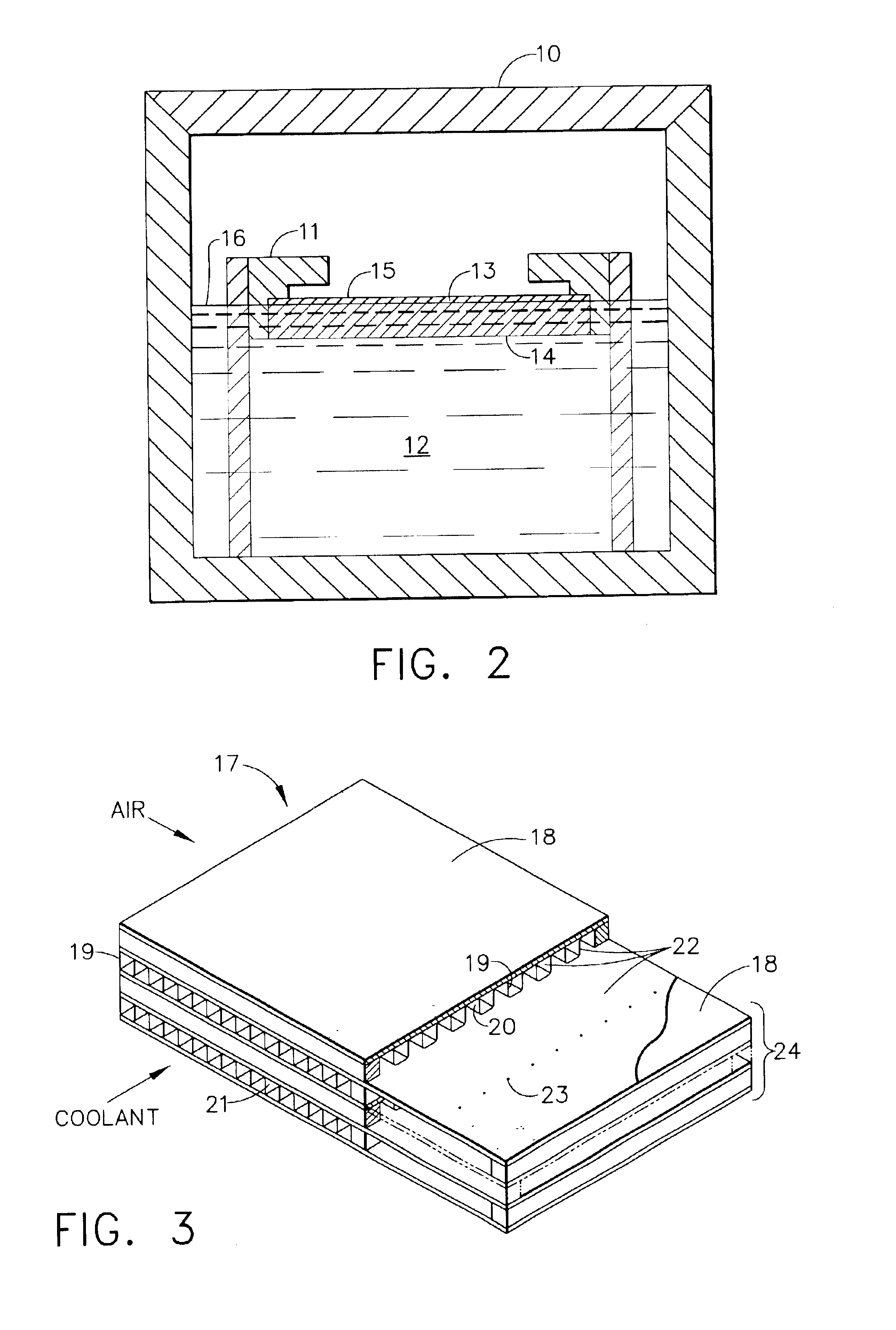Hydrophilic zeolite coating
a technology of zeolite and zeolite, which is applied in the direction of physical/chemical process catalysts, other chemical processes, lighting and heating apparatus, etc., can solve the problems of reducing the performance of the condensing heat exchanger, increasing air pressure drop, and micro-gravity environment of spa
- Summary
- Abstract
- Description
- Claims
- Application Information
AI Technical Summary
Problems solved by technology
Method used
Image
Examples
examples
Samples of aluminum alloy 6000 series, stainless steel 347, and nickel were tested. Most of the samples were 1×3″ coupons and the autoclaves used were Parr 45 mL bombs. For the synthesis solution, TEOS (98% liquid), aluminum foil (99.98%), NaOH (50 wt. %), and TPAOH (1M solution) were obtained from Aldrich. Deionized water was also used.
Various synthesis solutions were tested and the following is one preferred solution in which aluminum was included. Aluminum foil (0.0035 grams) was dissolved into 3.6 grams of a 50 wt. % aqueous solution of NaOH. TPAOH (13.35 grams) and water (121.02 grams) were added. The solution was then stirred for 10 minutes and then 16.25 grams of TEOS was added dropwise while stirring. The solution became clear after about 1.5 hours and was further stirred for 4 hours to provide the final synthesis solution.
The synthesis solution was placed into a Teflon lined Parr autoclave and each of the three samples was separately inserted into the autoclave. The substra...
PUM
| Property | Measurement | Unit |
|---|---|---|
| Length | aaaaa | aaaaa |
| Structure | aaaaa | aaaaa |
| Electrical resistance | aaaaa | aaaaa |
Abstract
Description
Claims
Application Information
 Login to View More
Login to View More - R&D
- Intellectual Property
- Life Sciences
- Materials
- Tech Scout
- Unparalleled Data Quality
- Higher Quality Content
- 60% Fewer Hallucinations
Browse by: Latest US Patents, China's latest patents, Technical Efficacy Thesaurus, Application Domain, Technology Topic, Popular Technical Reports.
© 2025 PatSnap. All rights reserved.Legal|Privacy policy|Modern Slavery Act Transparency Statement|Sitemap|About US| Contact US: help@patsnap.com


